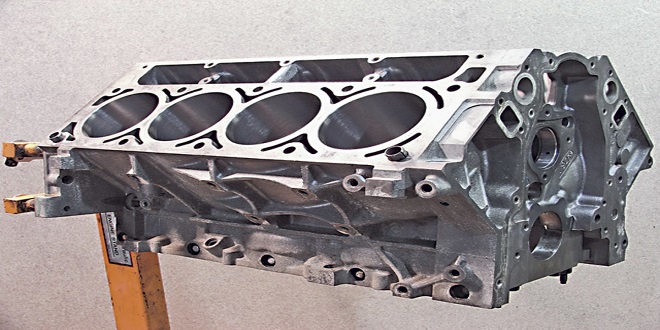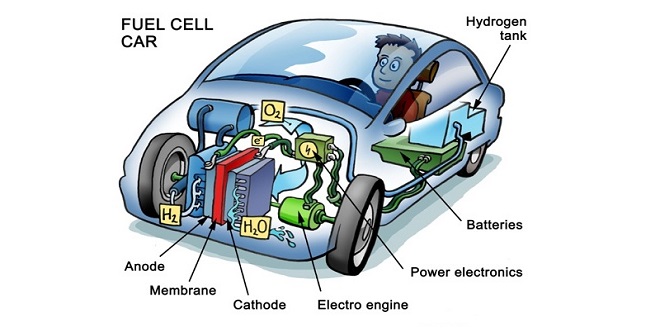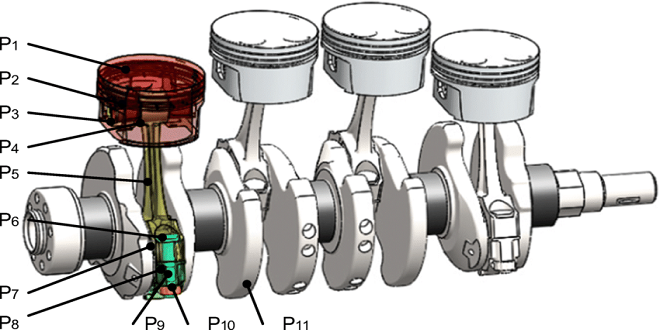Automobile Engine Materials

Introduction
Today, with the advances in material science, the options of materials available to designers have become quite numerous. This chapter will briefly delve into the material characteristics of some of the most commonly used materials on the engine. Further detailed information on material properties with regards to the internal combustion engine has been classified and standardized in an SAE, Society of Automobile Engineers, handbook.
It is also important to realize the relative importance of each of these characteristics. For example, for a high-performance vehicle, elements 2, 3, and 6 may not be as important as 1, 4, and 5. Whereas for an economical vehicle, elements 1, 2, 3, and 4 are the most important.
Structural Properties
Structural materials can in general be classified as ones that will carry relatively high stresses, which include ones that transmit or carry torques and forces. For these types of applications, a designer must take into consideration fatigue failure in order to guarantee structural success. Fatigue failure is most dependent on: Frequency, temperature effects, stress-cycle effects, combined stresses, effects of shape, stress concentration, notch sensitivity, sharpness of notches, surface finish, effects of corrosion, effects of size, surface treatments, effects of grain direction, creep failure.
Non-Structural Properties
The are several other important properties in the materials of machine elements besides structural properties. Properties such as cost of materials, cost of fabrication, availability, density, heat conductivity, hardness, bearing properties, thermal expansion, and resistance to corrosion are just a few of the important factors which must be considered.
Steels
Steel is the most commonly used material in the internal combustion engine because of its overwhelming advantages: Relatively low cost, highest endurance strength of available materials, naturally hard surfaces, and strength and hardness controlled through a wide range of heat treatments. Although, steel does have several disadvantages: Subject to rapid corrosion, relatively low thermal conductivity, and not easily cast.
In general, steels can be classified into 6 categories: Cast steels, stainless steels, low carbon steels (Carbon = 0.10 to 0.20 percent), medium carbon steels (Carbon = 0.30 to 0.50 percent), high carbon steels (Carbon = 1.0 percent), and special steels.
Carbon steels are generally used in machine elements that are small and in which stresses are low. Some common uses are for screw fasteners not under heavy loads, oils pans, small case hardened parts and covers. Carbon steel is also used when weldability is necessary.
Alloy steels have the advantage over carbon steels of being able to have a slower cooling rate, which can result in more uniformity of physical properties and has less residual stresses, deformations, or cracks. This allows alloyed steel to be treated for significantly higher strengths and hardness. These properties are especially important as the machine elements increase in size and have more complex shapes. Its only major disadvantage is that it is more costly than carbon steel. Stainless steel is characterized by its high chromium content, giving them an almost corrosion-proof characteristic. They are limited to the amount of heat treatment, which makes them undesirable for applications where a hard surface is necessary. In general, stainless steel are only used for exhaust valves and pipes and rarely for combustion chamber inserts.
Surface Hardening
Surface heat treatments may be employed on medium carbon steels. Elements such as crankshafts and camshaft bearing surfaces use the heat treatment method to meet design requirements. Nitriding can be used to produce an extremely hard, wear-resistant surface. Plating is used to reduce the wear of elements such as piston rings and cylinder bores using chromium.
Cast Iron
In general, the main engine block is made from gray cast iron, except for applications that need lightweight components, such as race cars. Gray cast iron has the exceptional characteristic that it can be cast into intricate shapes with relative ease. And while the endurance limit is lower than steel, its notch sensitivity is very low. Gray cast iron also makes an excellent bearing material. Chilled cast iron is used to obtain very hard surfaces from gray cast iron. With its added beneficial characteristics, it is used for camshafts and tappets, and other low-cost automobile parts.





